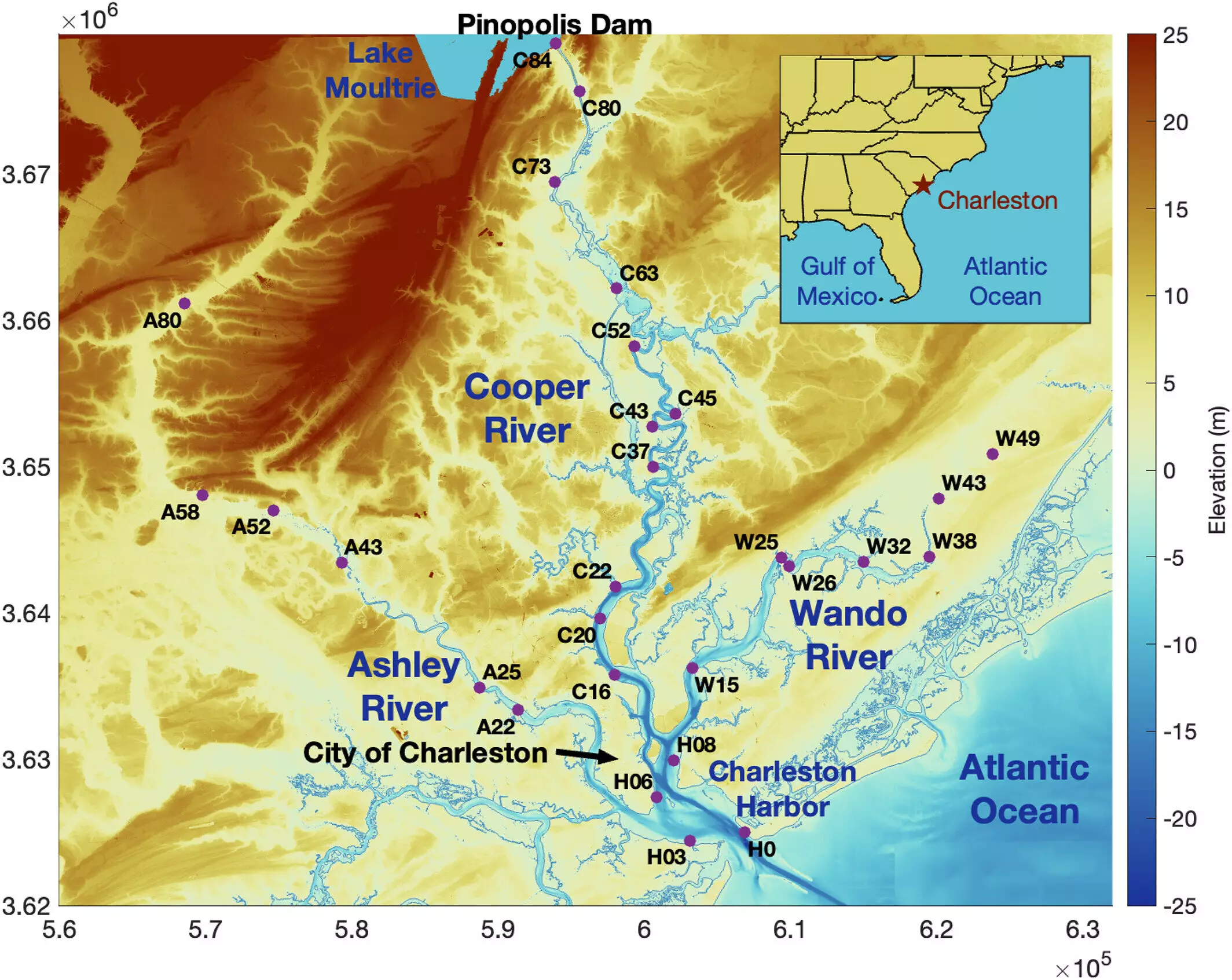The construction of dams has long been viewed as a pivotal solution to prevent flooding and manage water resources. However, a recent study illustrates that this well-intentioned infrastructure may exacerbate coastal flooding rather than mitigate it. A nuanced examination of this issue, particularly in the context of coastal estuaries where river dynamics meet oceanic forces, reveals the complex interplay at work. As climate change continues to influence severe weather patterns and sea-level trends, understanding the role of dams in flood management has never been more critical.
A study featured in the Journal of Geophysical Research: Oceans scrutinizes how dams affect flood risks in estuarine environments, using Charleston Harbor in South Carolina as a case study. Researchers discovered that the presence of dams does not produce a uniform outcome; they can either increase or decrease the risks associated with floods, depending on various factors such as storm surge duration and the physical characteristics of the water flow. The revelation that coastal jurisdictions might be inadvertently making themselves more vulnerable to flooding challenges the conventional wisdom surrounding dam construction.
One of the most enlightening aspects of the study was the concept that the shape of an estuary significantly influences the impact of storm surges. As lead author Steven Dykstra explains, these areas often have a funnel-like shape that can heighten rather than lessen the intensity of incoming water. When dams are introduced into these systems, they can redirect and amplify waves that would typically diminish as they move inland, creating a situation where storm surges can breach expected containment levels.
The researchers further supported their findings through computer modeling, extending their observations beyond Charleston Harbor to 23 different estuarine systems worldwide. These simulations revealed a consistent pattern: flood responses are intricately linked to both basin shape and human modifications to these natural systems. In essence, the introduction of dams can lead to enhanced wave amplification under certain conditions, which can be likened to the phenomenon of water splashing out of a bathtub—small alterations can lead to significant consequences.
Notably, these findings extend beyond immediate coastal areas. The study illustrated that significant inland flooding could be influenced by coastal structures, indicating that the effects of storm surges could be felt more than 50 miles away from the coast. This unsettling reality underscores the need for a holistic approach when assessing flood risks, taking into account geography and human intervention alike.
Dykstra raises a valid point when he discusses the need for heightened awareness regarding coastal influences on inland zones. Many residents may not recognize their vulnerability to coastal flooding, especially as sea levels rise. This disconnect can lead to underpreparedness during extreme weather events, leading in turn to potentially catastrophic flooding scenarios. Particularly alarming is the prospect that communities that have historically deemed themselves out of the reach of coastal impacts are now facing significant risks as climate change accelerates.
Understanding the implications of human interventions, such as dam constructions, is crucial for developing effective flood management strategies. As the global climate continues to shift, it is imperative for policymakers and community planners to reassess traditional flood defenses and pursue more integrative solutions.
In light of this study, a reevaluation of coastal management strategies is necessary. While the intention behind constructing dams is to protect communities from flooding, the reality appears to be more complex. There is a pressing need for innovative approaches that consider the multifaceted dynamics of water flow and coastal interactions. Sustainable solutions must focus on not only retaining protective measures but also adapting to the evolving challenges posed by climate change and human intervention. The future of flood management lies in fostering an informed dialogue that prioritizes ecological balance alongside the safety of communities.

